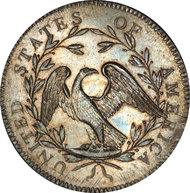PARIS — The French central bank is going on strike.
More than 1,500 employees were demonstrating Tuesday in Paris, union officials said, in a protest against a restructuring of the Banque de France that is expected to result in the loss of about 2,500 jobs by 2020. The bank currently employs around 13,000 full-time workers.
The bank did not respond immediately to a request for comment.
With France a member of the euro zone, it might seem an anomaly that the country even has a separate central bank. The European Central Bank, based in Frankfurt, does much of the heavy lifting for the 17-nation currency area, including setting monetary policy. And it is the Bundesbank, the German central bank, that is mainly responsible for operating the internal euro payments system for big money transfers.
Still, the E.C.B. employs only 1,810 people, and has to rely on the national central banks for support in economic research and market operations, as well as the physical task of ensuring that coins and bills are circulating properly.
The Banque de France has already cut about 25 percent of its work force since the physical euro came into being in 2002, according to a report last year from the French Court of Auditors. But its 13,0000-strong work force is larger than that of the Bundesbank, even though Germany is a larger country. The Bundesbank has cut its staff by 35 percent since 2002, to about 10,000 workers.
The French central bank says that many of the tasks that workers now are employed to do should be automated. It wants to reduce its network in France to 105 branches, from the current 127, and reduce the number of currency processing centers to 32 from 72.
Both Germany and Italy have moved more aggressively than France to reduce central bank overhead since the euro was born.
The Banque de France workers argue that the French central bank’s situation is not directly comparable to that of other euro zone central banks, as it has responsibilities in areas like credit mediation not shared elsewhere. A consulting firm hired by the workers on Tuesday presented a critique questioning the economic justification of the restructuring plan.
This being France, no one is to be fired outright. Rather, operating according to the auditor’s recommendations, the bank will simply not replace half of the 5,000 employees it expects to retire over the next seven years.
Jack Ewing contributed from Frankfurt.
Article source: http://www.nytimes.com/2013/01/30/business/global/30iht-banque30.html?partner=rss&emc=rss


